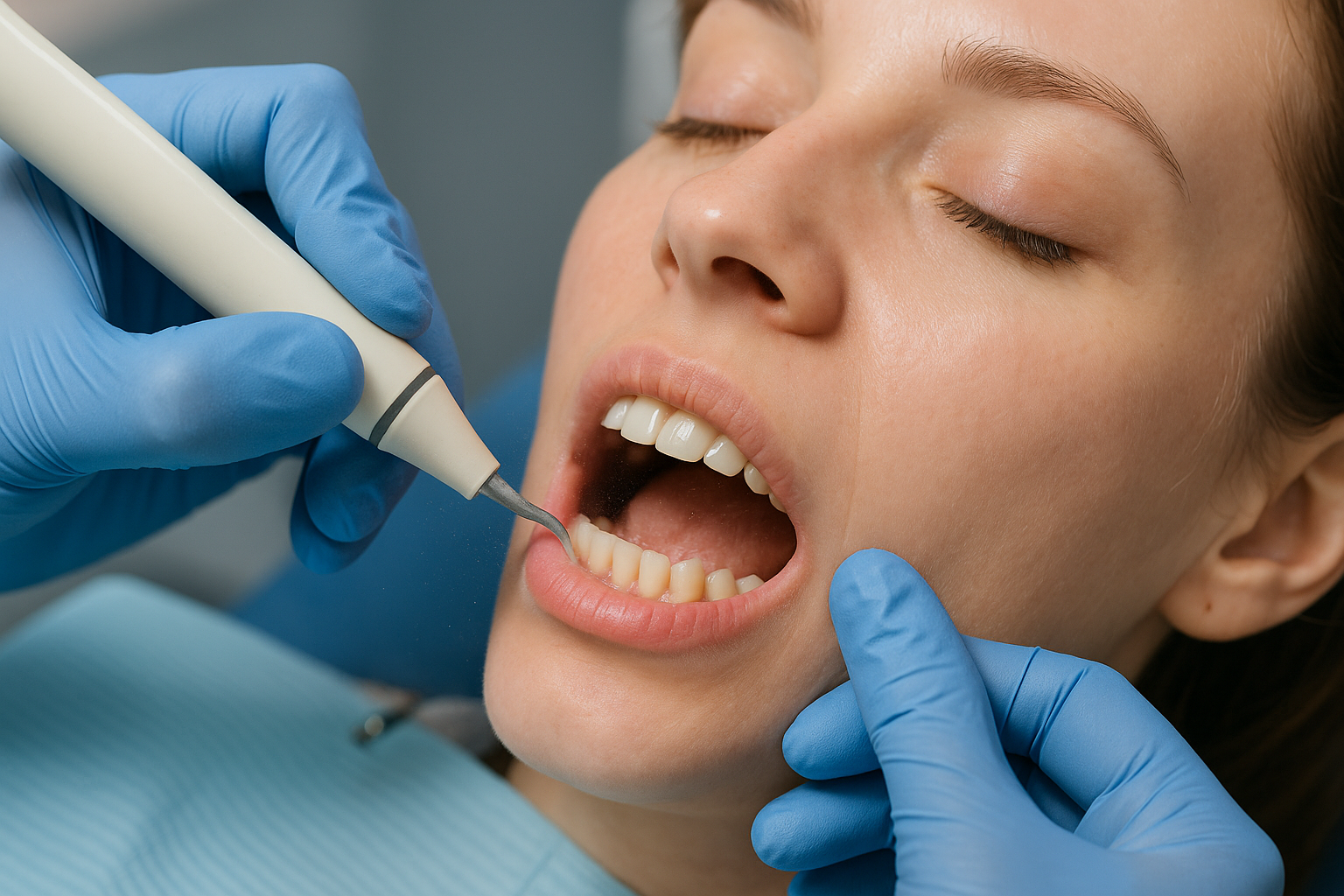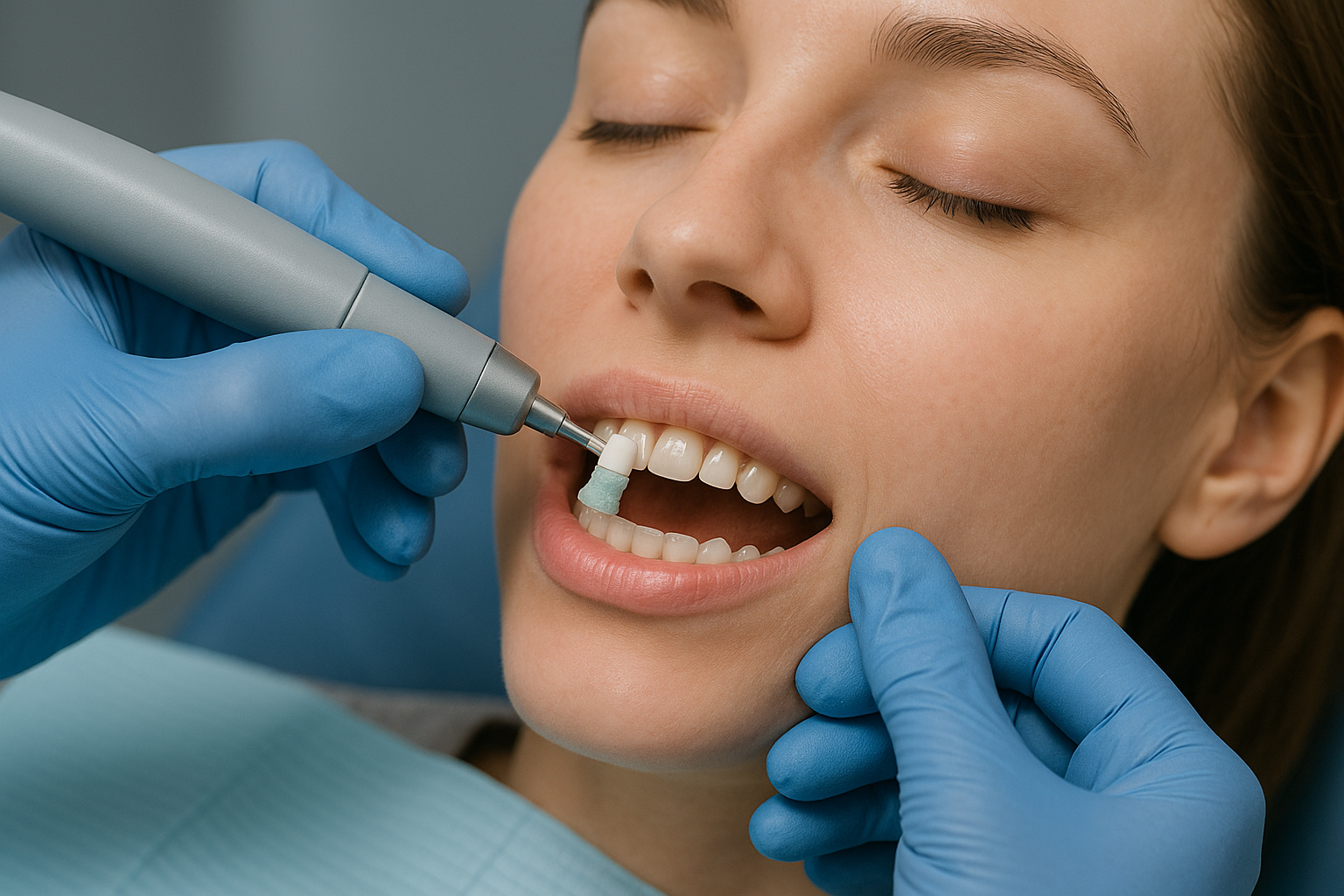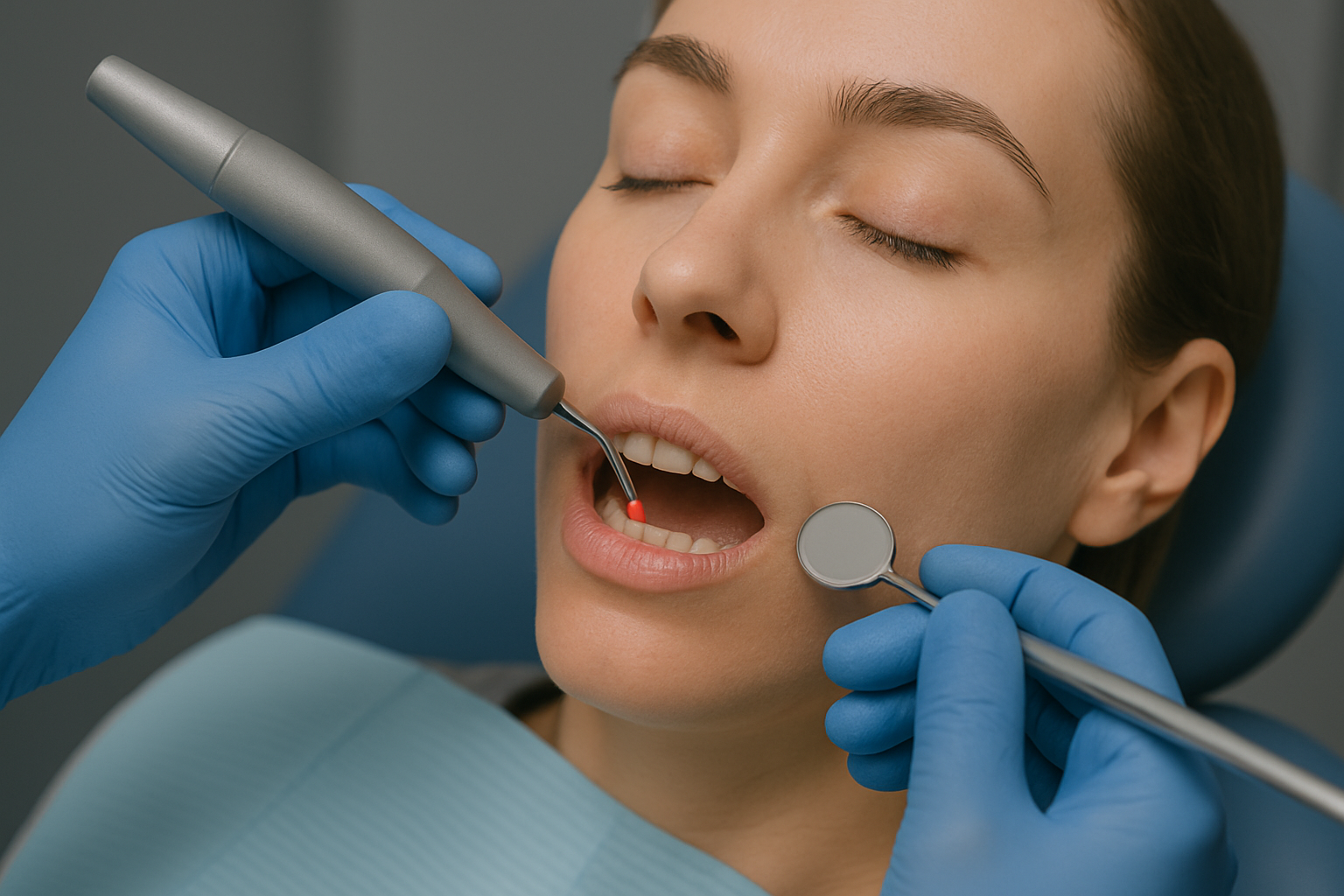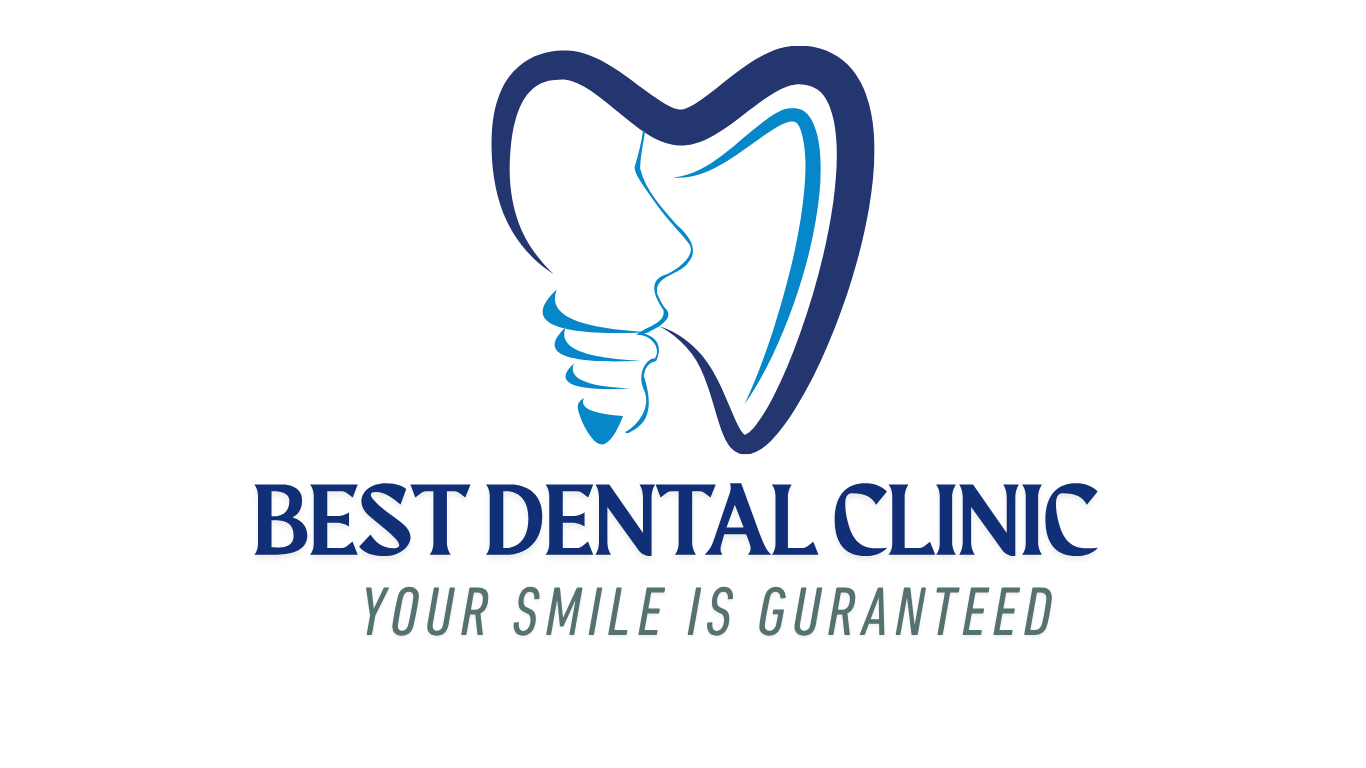ORAL PROPHYLAXIS
What is Oral Prophylaxis Dental Procedure
Oral prophylaxis dental procedure is a professional dental cleaning procedure done by a dentist or dental hygienist. It involves removing plaque, tartar (calculus), and surface stains from your teeth to maintain good oral health. It typically involves a combination of procedures that includes Ultrasonic Scaling, Teeth Polishing and LANAP. Oral prophylaxis dental procedure offers several important benefits for your dental health. It helps prevent gum diseases like gingivitis and periodontitis by removing plaque and tartar buildup. The procedure also helps control bad breath by eliminating odor-causing bacteria and food particles stuck between teeth. In addition, it removes surface stains, giving you a cleaner and brighter smile. Regular cleaning also lowers your risk of cavities by keeping harmful bacteria in check. Most dentists recommend getting oral prophylaxis done every six months to maintain healthy teeth and gums.

Ultrasonic scaling
What is ultrasonic scaling
Dentist advise ultrasonic scaling for removal of plaque and calculus. The oral environment is full of bacteria, which leads to formation of plaque on the tooth surface. When plaque is not removed, it gets hard and calcified, this leads to formation of calculus.
Ultrasonic scaling is the first step of periodontal treatment. The removal of plaque and calculus is important to maintain a good oral hygiene. In ultrasonic scaling of teeth, ultrasonic scalars are used.
What your dentist do before ultrasonic scaling
After examination of oral cavity, your dentist may advise you ultrasonic scaling. You are made to wear a goggle and do a chlorhexidine mouth rise before the procedure. Your dentist does scaling with the help of ultrasonic scaler and dental mouth mirror. A suction is placed by the dental assistant into the mouth. A stream of water is continuously produced while scaling, this flushes off the debris. You may experience sensitivity if you have attrition. The dentist may ask you to rinse in between to increase your comfort. Fluoride application may be done by the dentist and oral hygiene instructions are explained.
You may be asked to take regular follow up every 6 months based on the oral health.
Teeth polishing
What is teeth polishing
Teeth polishing is a dental procedure that leaves your teeth enamel glossy and smooth. At many dental offices, it’s a standard part of a routine cleaning appointment.
What are the benefits of teeth polishing
Teeth polishing offers several benefits for your oral health and smile. It helps remove minor surface stains caused by coffee, tea, tobacco, and certain foods, making your teeth appear whiter and shinier. After the procedure, your mouth feels noticeably smooth and fresh. Polishing also helps reduce the build-up of plaque, as the smooth surface makes it harder for plaque to stick to your teeth. Overall, it plays an important role in maintaining good oral hygiene and complements your daily brushing and flossing routine.


LANAP
What is LANAP
LANAP (Laser-Assisted New Attachment Procedure) offers a minimally invasive and effective treatment for gum disease. It targets and removes infected tissue and bacteria without the need for traditional cutting or stitches. The laser technology helps promote faster healing and reduces discomfort during and after the procedure. LANAP also encourages the regeneration of healthy gum tissue and bone around the teeth. Overall, it helps preserve your natural teeth and improves your overall oral health.
LANAP for gum contouring
While LANAP is typically used to treat periodontal disease, it also serves cosmetic purposes. People who have a ‘gummy smile’ when there is an overgrowth of gingival tissue may not like the look of their gums. In this case, LANAP can be used for gum contouring.
Benefits of LANAP for gum disease
Laser gum surgery, especially LANAP (Laser-Assisted New Attachment Procedure), offers several important benefits for treating gum disease. One of the key advantages is that the treatment can be tailored to each patient, with dentists adjusting the laser’s wavelength and power based on the severity of the condition. The procedure also helps reduce bleeding and swelling by targeting and eliminating harmful bacteria in the gum pockets, lowering the chances of needing further surgical treatments. Being minimally invasive, LANAP offers faster healing, less discomfort, and often requires little to no anesthesia, making the experience less stressful for patients. Additionally, the laser’s precision helps protect healthy teeth and tissues while effectively removing infected areas.
